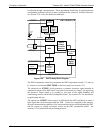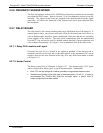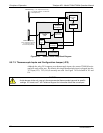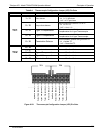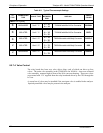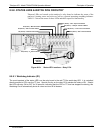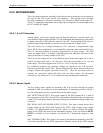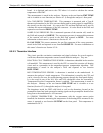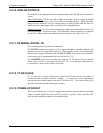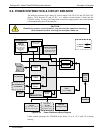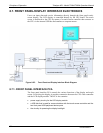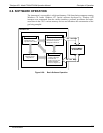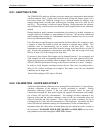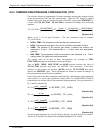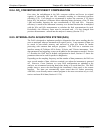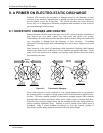
Principles of Operation Teledyne API - Model T200H/T200M Operation Manual
304
8.5.10. ANALOG OUTPUTS
The analyzer comes equipped with four Analog Outputs: A1, A2, A3 and a fourth that is
a spare.
A1 and A2 Outputs:
The first two, A1 and A2 are normally set up to operate in parallel
so that the same data can be sent to two different recording devices. While the names
imply that one should be used for sending data to a chart recorder and the other for
interfacing with a data logger, either can be used for both applications.
Output Loop-back
: All of the functioning analog outputs are connected back to the A/D
converter through a Loop-back circuit. This permits the voltage outputs to be calibrated
by the CPU without need for any additional tools or fixtures (see Section 6.13.5.4)
8.5.11. EXTERNAL DIGITAL I/O
The external digital I/O performs two functions.
The STATUS outputs carry logic-level (5V) signals through an optically isolated 8-pin
connector on the rear panel of the analyzer. These outputs convey on/off information
about certain analyzer conditions such as CONC VALID. They can be used to interface
with certain types of programmable devices (Section 6.15.1.1).
The CONTROL inputs can be initiated by applying 5V DC power from an external
source such as a PLC or data logger (Section 6.15.1.2). Zero and span calibrations can
be initiated by contact closures on the rear panel.
8.5.12. I
2
C DATA BUS
I
2
C is a two-wire, clocked, bi-directional, digital serial I/O bus that is used widely in
commercial and consumer electronic systems. A transceiver on the motherboard
converts data and control signals from the PC-104 bus to I
2
C. The data are then fed to
the relay board and optional analog input circuitry.
8.5.13. POWER-UP CIRCUIT
This circuit monitors the +5V power supply during analyzer start-up and sets the analog
outputs, external digital I/O ports, and I
2
C circuitry to specific values until the CPU
boots and the instrument software can establish control.
07270B DCN6512



